Korean Peninsula: Tracking the Situation
May 2012
Following four rounds of “exploratory talks” in New York (July 2011), Geneva (October 2011) and Beijing (December 2011 and February 2012), the U.S. and North Korea concluded the “Leap Day Agreement” on February 29. In return for 240,000 metric tons of nutritional assistance provided by the U.S., North Korea agreed to a moratorium on nuclear and missile activities. For the U.S., the deal initially appeared to signal that there was a degree of continuity in North Korean decision-making after the death of Kim Jong-il in December 2011. Since the overall arrangement had been put in place prior to Kim’s death, the Obama administration was hopeful that the deal could be the early basis for working with North Korea to prevent future provocations on the Korean Peninsula and facilitate an eventual resumption of the Six-Party Talks.
The U.S.’ tempered optimism quickly evaporated when North Korea announced on the eve of the Seoul Nuclear Security Summit – a gathering of over fifty heads of state intended to promote the prevention of nuclear terrorism – that it would launch a satellite in mid-April. During the prior episode leading up to North Korea’s April 2009 test, China and Russia supported Pyongyang’s position that it was preparing to conduct a peaceful satellite launch. This time round both countries sought to convince North Korea not to proceed with what was essentially another long-range ballistic missile test. New voices expressed direct concern – namely, the Philippines and Vietnam because the flight path of the missile test was directed southward.
Heralded as a gift from the North Korean people to Kim Il-sung to celebrate the centenary of his birth on April 15, North Korean officials took the unprecedented step of inviting foreign journalists to the new launch pad in Tongchang-ri. While these officials may have thought such access would convince the journalists of the peaceful nature of the satellite launch, the international community continued to view it as a thinly veiled long-range ballistic missile test that clearly violated prior UN Security Council resolutions that prohibited North Korea from carrying out “all ballistic missile-related activities.” Despite the clear wording of these resolutions, North Korea unsuccessfully tried to shift the focus onto the innocuous scientific satellite payload to justify its launch. However, irrespective of what was in the payload, the rocket itself was a long-range missile.
On April 13, North Korea defied the international community and conducted what turned out to be a failed enterprise. The missile disintegrated about 90 seconds after launch with debris falling into waters west of South Korea. On the surface, the failure did not appear to dampen the mass celebrations in Pyongyang surrounding the centenary of Kim Il-sung’s birth. Prior to the launch, Kim Jong-eun, grandson of the Eternal President (Kim Il-sung’s formal title), received the important ranks of First Secretary of the Party and Chairman of the Central Military Commission at a special Workers’ Party of Korea conference. Following the disastrous missile test, North Korea watchers are asking a new question: is the now formally anointed leader of North Korea competent? The consensus view among these watchers is that Kim Jong-eun will seek to compensate for this high profile failure with a nuclear test. We may be entering into a new cycle of escalation of tensions in Northeast Asia.
USIP’s Korea Working Group (KWG) has been engaging current and former policymakers in Washington, Seoul, Beijing and Tokyo in Track 1.5 dialogues that seek to develop collaborative ways to prevent future North Korean provocations.
February 2012
On December 30, Kim Jong-eun was formally appointed as the “Supreme Commander” of North Korea following his father’s death on December 17. While on the surface it appears that the post-Kim Jong-il power consolidation process is proceeding smoothly, larger questions linger about the sustainability of the Kim family regime. Growing reports of blackouts in Pyongyang and large Chinese shipments of food and oil assistance highlight the North Korean state’s structural weaknesses and potential early fracturing under the surface.
What’s complicating the situation is a divergence of policy positions regarding North Korea. While Beijing warns other countries – notably South Korea and the United States – not to provoke North Korea under its new leadership, Seoul and Washington have been signaling to Pyongyang a reaffirmation of previous statements of deterrence against future DPRK provocations. Given its advanced nuclear weapons development activities, the prospects of sudden instability in North Korea is of particular concern to Seoul and Washington. USIP has been conducting briefings and convening meetings for U.S. government officials and Congressional staffers on the spreading fog of the post-Kim Jong-il period and implications for conflict prevention efforts in Northeast Asia.
December 2011
On Dec. 19, North Korean state media announced that Kim Jong-il had died on Dec. 17. The report stated that Kim had succumbed to mental and physical exhaustion while conducting on-site guidance visits. DailyNK, a news outlet based in Seoul with mobile phone access to North Koreans inside the reclusive country, reports that North Korean security forces have imposed rigid social controls following the announcement. The authorities have closed markets and prohibited people from going outside. The loyalty of the elites to Kim Jong-eun, Kim Jong-il’s third son and anointed successor, is now uncertain.
For more analysis of the key policy issues arising from the sudden death of North Korean leader Kim Jong-il, read the USIP On the Issues:
The Fog of the Post-Kim Jong-Il Period
***
During a late October visit to North Korea, Chinese Vice Premier Li Keqiang stated that China’s trade with North Korea rose by 87 percent in the first seven months of 2011 compared to the same period a year earlier. Amid ongoing international sanctions, North Korea is becoming increasingly dependent on China as its primary lifeline. The significance of the latest Sino-North Korea trade statistic is that it raises serious questions about the efficacy of financial sanctions. Washington and Seoul are heavily relying on these sanction measures as a core policy tool in their ongoing efforts to influence North Korean decision-making and induce Pyongyang’s return to the stalemated Six-Party Talks.
Earlier work by USIP’s Financial Sanctions Study Group reveals an alarming unintended consequence of financial sanctions – North Korean state trading firms are now conducting more of their commercial activities in mainland China where these firms can effectively evade sanctions by contracting private Chinese companies to sell or procure strategic goods on their behalf. By doing so, a cash-strapped North Korean regime has created new channels for destabilizing proliferation activities.
October 2011
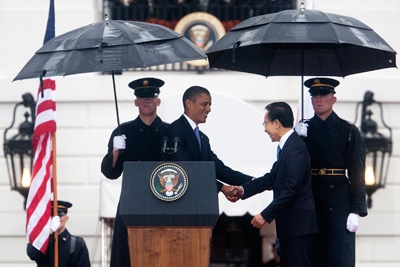 On October 13, South Korean President Lee Myung-bak capped his state visit to Washington with an address to a joint session of Congress. In many respects, the state visit represented further progress towards realizing the Joint Vision Statement that Presidents Obama and Lee unveiled in June 2009. Amid setbacks and chronic challenges in almost every major region, Washington views South Korea as a linchpin on a global scale. From hosting the G20 summit in 2010 to preparing to host the next Nuclear Security Summit in 2012, South Korea has been establishing itself as a global partner in addressing common challenges ranging from rebalancing the international economy to preventing the use of nuclear material for terrorist attacks.
On October 13, South Korean President Lee Myung-bak capped his state visit to Washington with an address to a joint session of Congress. In many respects, the state visit represented further progress towards realizing the Joint Vision Statement that Presidents Obama and Lee unveiled in June 2009. Amid setbacks and chronic challenges in almost every major region, Washington views South Korea as a linchpin on a global scale. From hosting the G20 summit in 2010 to preparing to host the next Nuclear Security Summit in 2012, South Korea has been establishing itself as a global partner in addressing common challenges ranging from rebalancing the international economy to preventing the use of nuclear material for terrorist attacks.
From a prevention perspective, the state visit highlighted the effectiveness of the U.S.-South Korean alliance in preserving peace and stability by deterring North Korean provocations following the 2010 attacks by the North against the South. While security analysts believe that this enhanced defense posture has kept North Korean provocations in check, it has elicited a strong reaction from China, which views the deployment of an aircraft carrier group as a U.S. military capability that also threatens Chinese territory. USIP will be engaging current and former policymakers and advisers in Track 1.5 activities to better assess these developments and examine their implications for regional stability.
July 2011
On June 3, North Korea revealed that it had been engaged in South Korea-initiated secret talks. South Korea acknowledged that these talks had taken place in Beijing, but denied North Korea’s claim that South Korean officials had offered bribes for an inter-Korean summit. North Korea declared that it would not deal with the Lee Myung-bak administration for the remainder of its term. The significance of this development is that it derails Beijing’s threestage proposal for resuming the stalled Six-Party Talks. Stage one called for an improvement in inter-Korean relations. Stage two set out U.S.-North Korea talks. Stage three envisioned the culmination of this process with a restart of the Six-Party Talks. While this is a disappointment for Seoul in its efforts to improve inter-Korean ties, this is also a major setback for Beijing’s plan to facilitate a resumption of the Six-Party Talks. Chinese leaders are concerned that if they remain deadlocked, the region will become more unstable, particularly in light of the North Korean provocations against the South last year.
April 2011
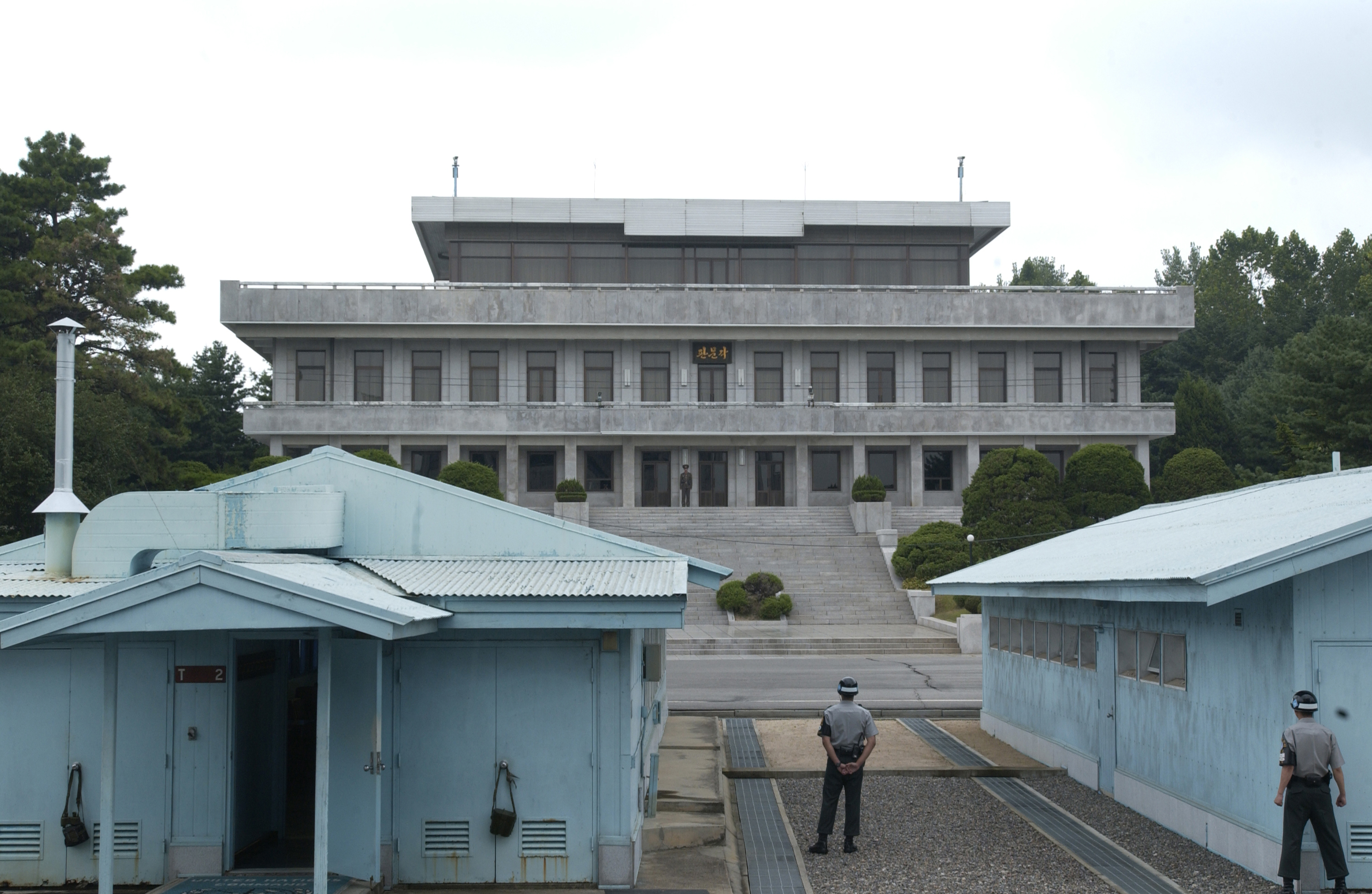
Amid reports of growing food shortages in North Korea, Pyongyang appealed to foreign governments and NGOs this spring in an effort to secure food aid. The South Korean government's assessment is that the DPRK regime is hoarding food supplies in order to distribute them to the people in celebration of unveiling the country as a "strong and prosperous nation" in 2012. The U.S. government has received a U.N. World Food Programme report and is expected to announce its decision on food aid after its internal review. In previous periods, despite many governments' firm statements that food aid was a humanitarian issue and would not be linked to political considerations, food aid shipments usually led to a breakthrough in stalled negotiations with the North Koreans.
What is different this time is the higher bar set by Seoul, in close coordination with Washington, in the aftermath of DPRK provocations against South Korea in 2010. At present, a key condition for the resumption of the deadlocked Six-Party Talks is an improvement in inter-Korean relations, which, in turn, is dependent on Pyongyang apologizing to Seoul for the March 2010 sinking of a ROK warship. With the DPRK adamant that it was not responsible for the sinking, the overall deadlock is likely to continue.
February 2011
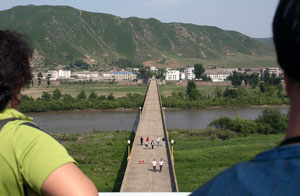 In early 2011, Seoul and Pyongyang took initial steps to revive attempts to reunite families separated during the Korean War and restart inter-Korean military talks. Efforts on both fronts collapsed when North Korean military officials walked out of a meeting with their South Korean counterparts on February 9 in Panmunjom, the "truce village" located along the demilitarized zone. Following North Korean provocations and the dangerous escalation of tensions on the Korean Peninsula in 2010, these talks were held amid pressure from Beijing and Washington to reopen inter-Korean dialogue. China and the United States deemed the improvement in inter-Korean relations as an important step towards reinitiating the stalled Six-Party Talks.
In early 2011, Seoul and Pyongyang took initial steps to revive attempts to reunite families separated during the Korean War and restart inter-Korean military talks. Efforts on both fronts collapsed when North Korean military officials walked out of a meeting with their South Korean counterparts on February 9 in Panmunjom, the "truce village" located along the demilitarized zone. Following North Korean provocations and the dangerous escalation of tensions on the Korean Peninsula in 2010, these talks were held amid pressure from Beijing and Washington to reopen inter-Korean dialogue. China and the United States deemed the improvement in inter-Korean relations as an important step towards reinitiating the stalled Six-Party Talks.
However, following the North Korean military delegation's refusal to accept responsibility for the sinking of the South Korean warship the Cheonan in March, the likelihood of a modest thawing of relations appears low. This puts Beijing in a difficult position as chair of the Six-Party Talks. During President Hu Jintao's state visit to Washington, the two countries acknowledged that they had to cooperate more closely in order to bring North Korea back to the negotiating table. The afterglow of a successful state visit is fading as a result of China's refusal to refer North Korea's uranium enrichment program to the UN Security Council. China has stated that it believes this matter is best dealt with in the Six-Party Talks. The new year is off to a poor start on the Korean Peninsula.
January 2011
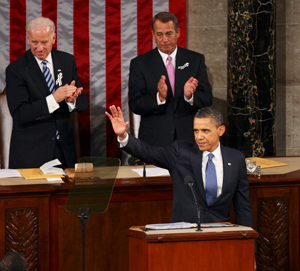 In his State of the Union address, President Obama asserted that “we stand with our ally South Korea, and insist that North Korea keeps its commitment to abandon nuclear weapons.” This Democratic People's Republic of Korea (DPRK) denuclearization goal was a core focus of a U.S.-South Korea-Japan trilateral Track 1.5 conference that USIP’s Center for Conflict Analysis and Prevention co-convened during January 17-18 in Seoul, Korea. The 5th “Trilateral Dialogue in Northeast Asia” (TDNA) conference examined realistic approaches to resuming the implementation of the September 2005 Joint Statement. This stalled Six-Party Talks agreement outlines a path for North Korea to peacefully abandon its nuclear weapons program in return for diplomatic normalization with the United States and Japan, and economic development assistance. While the trilateral partners explore ways to work with China to restart Pyongyang’s earlier denuclearization activities, the near-term priority is standing together to prevent future North Korean provocations. An alarming increase in such actions last year – the sinking of the South Korean warship the Cheonan in March and the shelling of South Korea’s Yeonpyeong Island in November – have raised the likelihood of a wider escalation of tensions on the Korean Peninsula.
In his State of the Union address, President Obama asserted that “we stand with our ally South Korea, and insist that North Korea keeps its commitment to abandon nuclear weapons.” This Democratic People's Republic of Korea (DPRK) denuclearization goal was a core focus of a U.S.-South Korea-Japan trilateral Track 1.5 conference that USIP’s Center for Conflict Analysis and Prevention co-convened during January 17-18 in Seoul, Korea. The 5th “Trilateral Dialogue in Northeast Asia” (TDNA) conference examined realistic approaches to resuming the implementation of the September 2005 Joint Statement. This stalled Six-Party Talks agreement outlines a path for North Korea to peacefully abandon its nuclear weapons program in return for diplomatic normalization with the United States and Japan, and economic development assistance. While the trilateral partners explore ways to work with China to restart Pyongyang’s earlier denuclearization activities, the near-term priority is standing together to prevent future North Korean provocations. An alarming increase in such actions last year – the sinking of the South Korean warship the Cheonan in March and the shelling of South Korea’s Yeonpyeong Island in November – have raised the likelihood of a wider escalation of tensions on the Korean Peninsula.
Initiated by USIP in 2008, TDNA seeks to foster the development of policy ideas and approaches through recurring Track 1.5 dialogue on common challenges and opportunities in Northeast Asia and in the international community. Building on four earlier rounds of trilateral Track 1.5 dialogue, this USIP-led project has facilitated sustained policy engagement on pivotal chronic issues affecting Washington, Tokyo, and Seoul. Together, the TDNA partners continue to promote a policy dialogue mechanism that is nonpartisan, flexible, and sustainable. TDNA serves as a ‘policy R&D’ forum where an exchange of perspectives increases mutual understanding and informs the development of policies. Read more about the State of the Union address.
December 2010
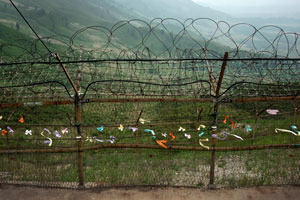 On November 23, the North Korean People’s Army (KPA) launched an artillery attack on South Korea’s Yeonpyeong Island in the disputed western maritime boundary area. Two marines and two civilians on the South Korean side were killed in the artillery exchange – the first attack on South Korea by the North since 1953. The U.S. and South Korea quickly responded by condemning the attack and conducting a joint naval exercise with the USS George Washington aircraft carrier battle group in the Yellow Sea. Despite U.S. and South Korean efforts to get China to rein in its North Korean ally in order to prevent a future provocation, Beijing instead urged both Koreas to exercise restraint and launched a diplomatic effort to convene an “emergency session” with the Six-Party Talks envoys. Washington’s deep disappointment with the lack of a strong response from China resulted in a special U.S.-South Korea-Japan trilateral meeting at the State Department on December 6. North Korean provocations are likely to continue because Pyongyang now views itself as a nuclear weapons state that can carry out limited military strikes without fear of retaliation from South Korea or the U.S. In March, North Korea sank the South Korean warship, the Cheonan.
On November 23, the North Korean People’s Army (KPA) launched an artillery attack on South Korea’s Yeonpyeong Island in the disputed western maritime boundary area. Two marines and two civilians on the South Korean side were killed in the artillery exchange – the first attack on South Korea by the North since 1953. The U.S. and South Korea quickly responded by condemning the attack and conducting a joint naval exercise with the USS George Washington aircraft carrier battle group in the Yellow Sea. Despite U.S. and South Korean efforts to get China to rein in its North Korean ally in order to prevent a future provocation, Beijing instead urged both Koreas to exercise restraint and launched a diplomatic effort to convene an “emergency session” with the Six-Party Talks envoys. Washington’s deep disappointment with the lack of a strong response from China resulted in a special U.S.-South Korea-Japan trilateral meeting at the State Department on December 6. North Korean provocations are likely to continue because Pyongyang now views itself as a nuclear weapons state that can carry out limited military strikes without fear of retaliation from South Korea or the U.S. In March, North Korea sank the South Korean warship, the Cheonan.
Not only will North Korean provocations raise the level of tensions among countries in the region, they will exacerbate difficulties in U.S.-China relations. Largely ignoring these recent provocations – including the revelation in November that North Korea developed a new uranium enrichment facility – the Communist Party of China has continued its institution- and capacity-building activities in North Korea. Wu Bangguo, head of China’s National People’s Congress, welcomed Choe Thae-bok, head of North Korea’s Supreme People’s Assembly, to Beijing on December 1 to discuss how the two countries can deepen bilateral economic and political ties. Rather than following Washington’s renewed calls for it to apply more pressure on Pyongyang, Beijing is going in another direction – it’s continuing to develop the Sino-DPRK relationship while seeking to rein in U.S.-South Korean military activities. In spite of all the careful Chinese preparations to ensure a smooth state visit in mid-January, President Hu Jintao’s high-profile events in Washington may be overshadowed by a North Korean cloud.
September 2010
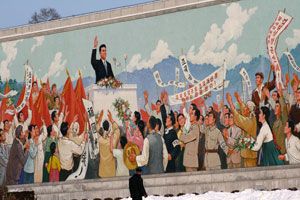 Against the backdrop of stalled Six-Party Talks, the Workers' Party of Korea (WPK) convened its party conference in Pyongyang in September 2010. The highlights of the party conference were the reappointment of Kim Jong-il as the General-Secretary of the WPK, the appointment of this third son, Kim Jong-eun, as a Vice Chairman of the WPK's Central Military Commission, and his promotion to the rank of four-star general. Kim Jong-eun's appointment and promotion are a major component of launching the "rising generation" of the WPK. Kim Jong-il has, in practice, created a mirror version of the Communist Party of China's (CPC) leadership structure. Prior to the party conference, the CPC had been implementing a number of economic development deals with the WPK – deals that Chinese Premier Wen Jiabao had signed during his October 2009 visit to Pyongyang.
Against the backdrop of stalled Six-Party Talks, the Workers' Party of Korea (WPK) convened its party conference in Pyongyang in September 2010. The highlights of the party conference were the reappointment of Kim Jong-il as the General-Secretary of the WPK, the appointment of this third son, Kim Jong-eun, as a Vice Chairman of the WPK's Central Military Commission, and his promotion to the rank of four-star general. Kim Jong-eun's appointment and promotion are a major component of launching the "rising generation" of the WPK. Kim Jong-il has, in practice, created a mirror version of the Communist Party of China's (CPC) leadership structure. Prior to the party conference, the CPC had been implementing a number of economic development deals with the WPK – deals that Chinese Premier Wen Jiabao had signed during his October 2009 visit to Pyongyang.
The "rising generation" will now have more opportunities to work directly with their CPC counterparts in institution- and capacity-building activities in North Korea. However, as Kim Jong-eun's elevation marks the beginning rather than the completion of his grooming process, the designated successor will need to develop his leadership capabilities on an accelerated timetable before assuming more senior leadership roles. Should his father die before the completion of this grooming process, Kim Jong-eun may become a trigger for instability if powerful North Korean figures see an opportunity to assume greater control of a regime led by a weak leader.
USIP is conducting research projects with leading North Korea watchers in the United States and Asia to better access the rapidly unfolding events in Pyongyang. Leadership instability in a country with nuclear weapons programs and chronic humanitarian issues poses a serious threat to peace and stability in Northeast Asia. Such concerns are compounded by North Korean provocations like the November 23 artillery attack on South Korea's Yeonpyeong Island. Many North Korea watchers assert that these provocations reflect the need for Kim Jong-eun to develop his military and security credentials as he is groomed for leadership roles.